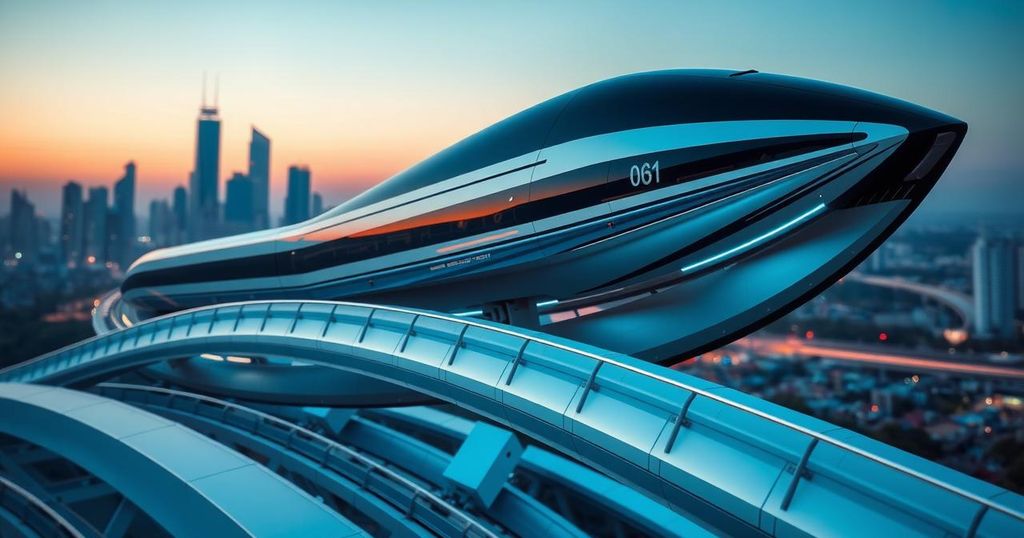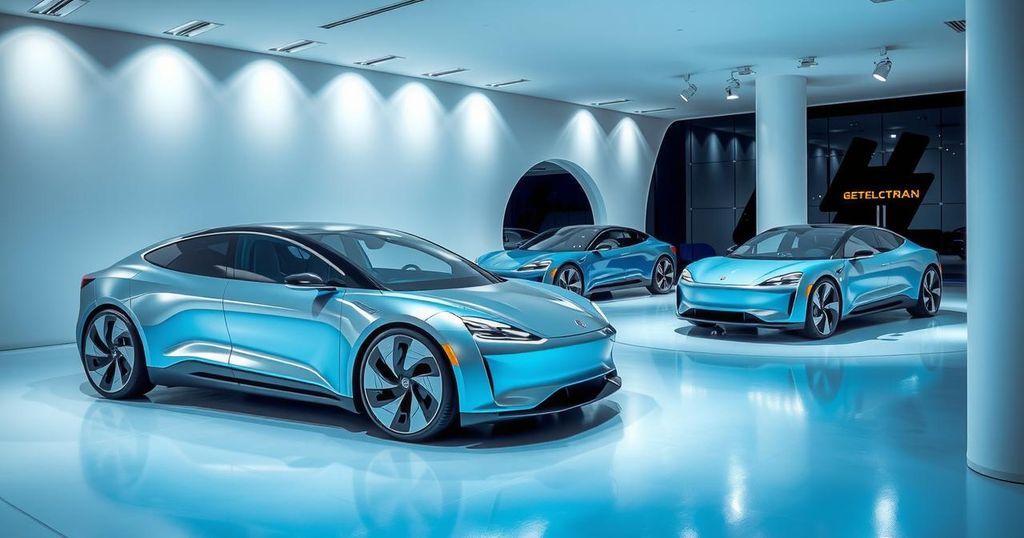China’s 373mph Flying Train Set to Challenge HS2
- China is developing a 373mph ‘flying train’ that could overshadow HS2.
- The maglev technology featured its prototype in Beijing recently.
- Maglev trains eliminate friction by hovering above the tracks.
- High-speed services could launch from China within five years.
- Experts believe maglev could end traditional high-speed rail travel.
China’s Maglev Technology Threatens HS2 Viability
China’s ambitions to develop a stunning 600km/h (373mph) “flying train” technology are poised to overshadow Britain’s highly anticipated HS2 line, which is yet to kick off operations. This futuristic train, known as a magnetic levitation or “maglev” train, was recently showcased by state-owned CRRC in Beijing, underscoring their confidence in the evolving technology. Unlike traditional trains that struggle to surpass 200mph, maglev trains float mere millimeters above their tracks, a feature that significantly reduces friction and allows for unprecedented travel speeds. As maintenance costs dwindle and emission-free electric motors come into play, the appeal of maglev trains only intensifies, bringing into question the relevance of HS2 before it even operates.
Experts Predict Maglev Will Surpass Current High-speed Trains
Currently, only a handful of maglev services are active globally, primarily catering to low-speed airport links. However, CRRC is actively aiming to launch ultra-high-speed maglev services within the next five years, projecting speeds that could exceed 300mph. Some experts are estimating that either the Chinese maglev or Japan’s competing model will enter service as soon as the middle of the next decade—just as HS2, which plans to operate at 225mph, is supposed to begin operations across the UK. Professor Johannes Kluehspies, president of the International Maglev Board, stated that a long-range maglev could obsolete conventional bullet trains like HS2 altogether. “If the Chinese or Japanese succeed, it will be the end of high-speed rail everywhere in the world,” Kluehspies emphasized, highlighting a significant shift in rail travel visions.
Travel Time Reductions Promise Game-Changing Impact
The prototype train, named CRRC 600, was unveiled during the 17th Modern Railways exhibition in Beijing, with CRRC’s senior engineer Shao Nan indicating its capability to carve out a new travel niche between super-fast trains and jet aircraft, specifically over distances reaching 1,300 miles. Current travel times between major Chinese cities like Beijing and Shanghai would drastically shrink, from four and a half hours by existing high-speed train to just two and a half hours with the maglev. In Europe, similar distances could turn Rome to Berlin travel time into a breeze, while London could connect to Glasgow in merely an hour and a half, cutting HS2’s projected times. This explosive potential has piqued interest, although Jeremy Acklam, a transportation expert, cautions that the UK is unlikely to embrace this technology until it proves its reliability elsewhere due to HS2’s ongoing issues with delays and budget overruns.
In summary, China’s pursuit of the groundbreaking 373mph ‘flying train’ threatens to render the UK’s HS2 line obsolete even before its launch. The technological advancements in maglev trains, with their potential for drastically reduced travel times and lower maintenance costs, present a formidable challenge to existing high-speed rail methods. While the UK may eventually consider adopting maglev technology, the current scenario underscores a significant shift in the future of transportation, with lines like HS2 lagging behind.




Post Comment